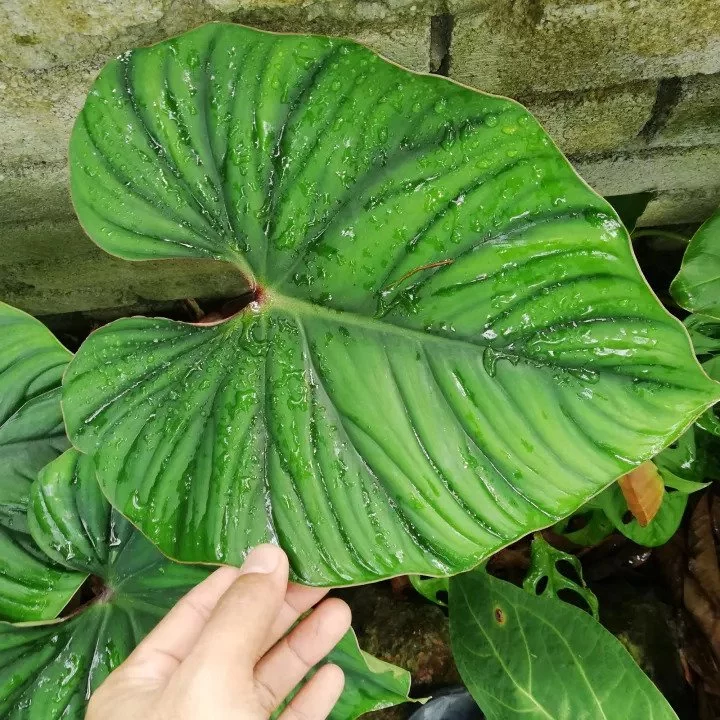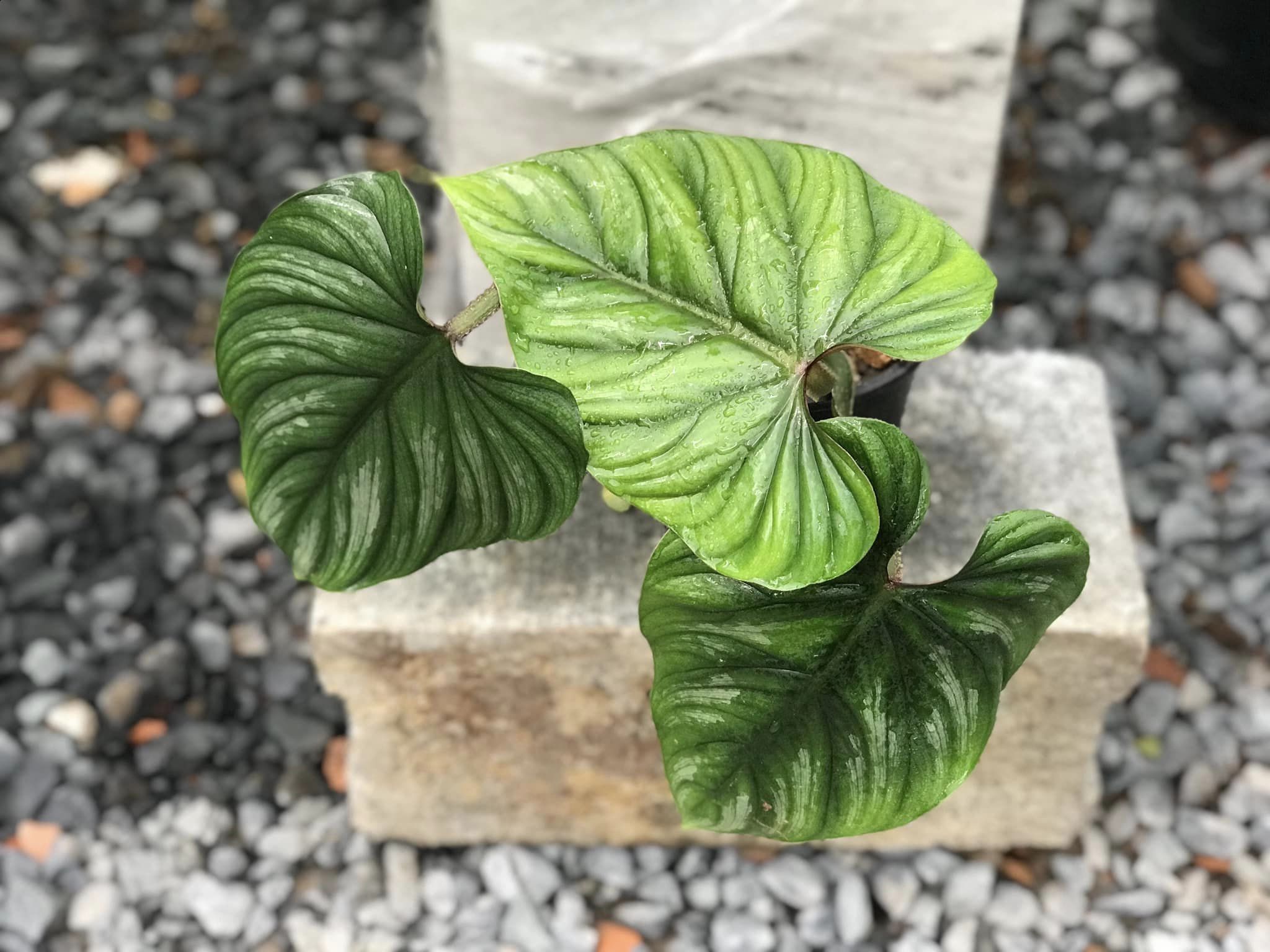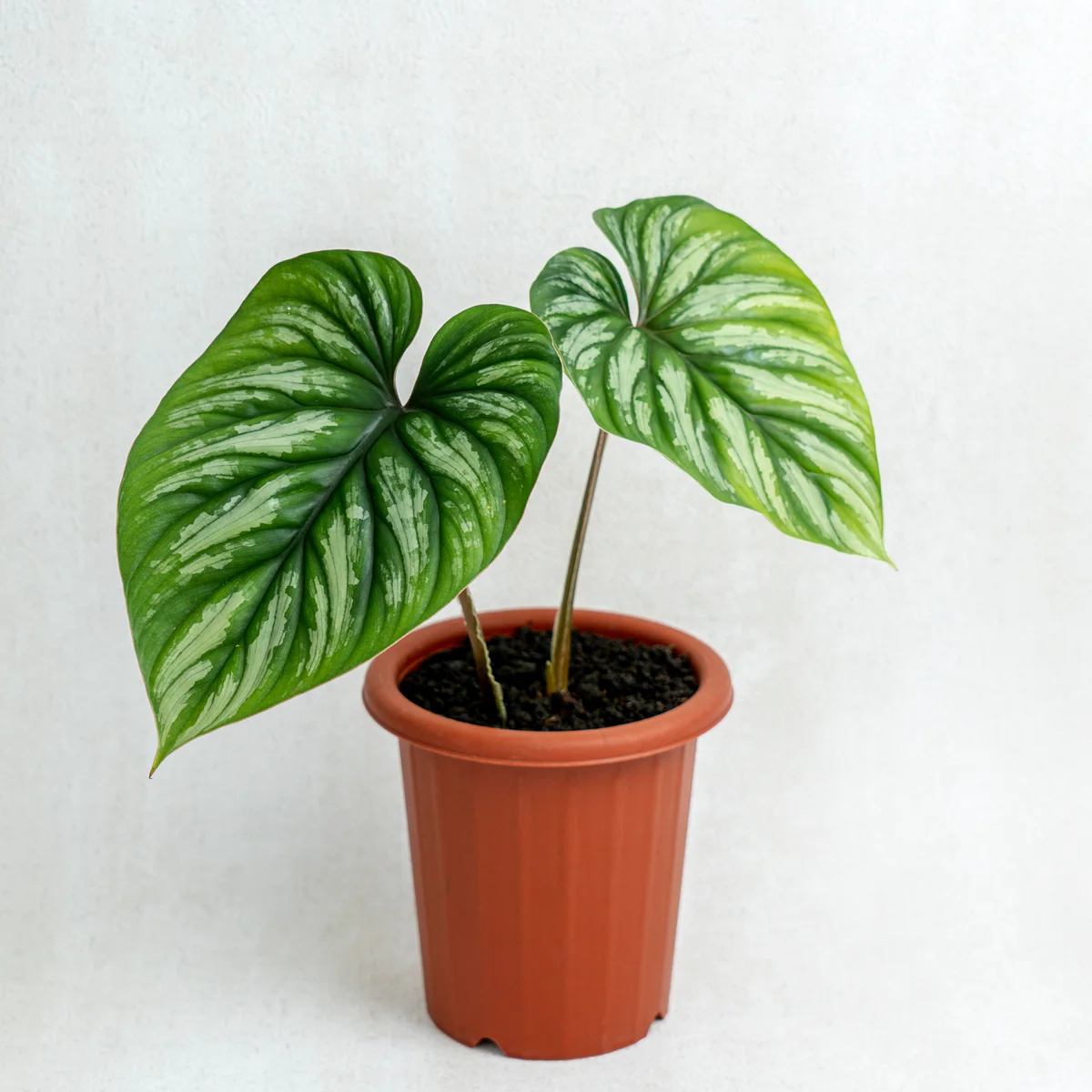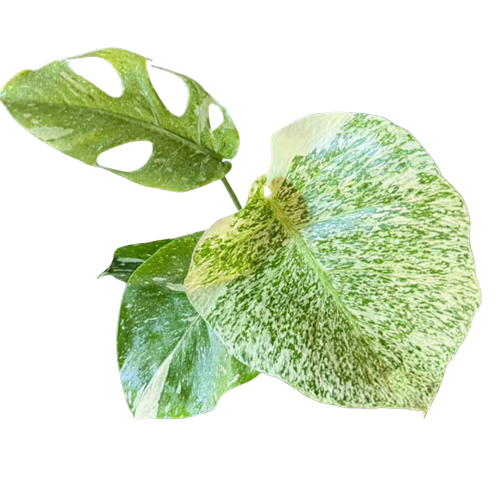The Philodendron Plowmanii Black Face is a stunning houseplant prized for its velvety black foliage. With proper care, this tropical plant can thrive indoors, adding drama and interest to any space. However, there are some common mistakes that can lead to poor growth. Avoid these missteps and you’ll be rewarded with a healthy, thriving Black Face Philodendron.

Overwatering
Perhaps the most common mistake with Philodendron Plowmanii is overwatering. This aroid likes to dry out between waterings. Sitting in wet soil will cause root rot and decline.
Signs of Overwatering
- Wilting or drooping leaves
- Yellowing leaves
- Root rot – roots turn brown or mushy
How to Avoid
- Allow the top inch or two of soil to dry out before watering again. The plant should feel light when lifted.
- Water less in winter when growth slows.
- Use a pot with drainage holes and well-draining soil mix.
Corrective Action
- Remove the plant from wet soil immediately and repot in fresh, dry soil. Trim off any rotten roots.
Underwatering
While overwatering is common, it is also possible to underwater your Philodendron Plowmanii. Allowing the soil to completely dry out too often can stress the plant.
Signs of Underwatering
- Leaves turn yellow and crispy at the edges
- Growth slows down
- Leaves start to droop
How to Avoid
- Water when the top few inches of soil feel dry. Don’t wait until the pot feels totally lightweight.
- In hot, dry weather, check soil moisture frequently.
Corrective Action
- Water the plant thoroughly and place in a shady spot while it recovers. Damaged leaves won’t heal but new growth should resume.

“Discover the unique beauty of the Philodendron Plowmanii Black Face! Click here to bring this rare and exquisite plant into your home today!”
Low Humidity
Native to the tropics, the Philodendron Plowmanii thrives in humid conditions. Dry indoor air can quickly lead to leaf tip burn and brown crispy edges.
Signs of Low Humidity
- Leaf tips turn brown
- Older leaves develop brown, crispy edges
- New leaves stay small and stunted
How to Increase Humidity
- Place the plant on a pebble tray filled with water
- Mist the leaves daily
- Use a humidifier
- Group plants together to create a humid microclimate
Corrective Action
- Prune off damaged leaves. Improving humidity will prevent further damage.
Drafts and Temperature Fluctuation
The Philodendron Plowmanii prefers warm, stable temperatures between 65-80°F. Exposure to drafts, vents, and excessive temperature fluctuation can shock the plant.
Signs of Temperature Stress
- Leaves turn yellow
- Leaf tips and edges brown
- Plant wilts
- Slow growth
How to Avoid
- Site indoors away from drafts and frequently used doors/windows
- Move away from heat vents
- Keep temps consistently between 65-80°F
Corrective Action
- Move to a stable environment. Damaged parts won’t recover but new leaves will grow normally.

Improper Lighting
Providing the right amount of light is key to growing a healthy Philodendron Plowmanii. Too little light leads to small, sparse leaves while too much sun scorches the foliage.
Signs of Improper Light
- Leaves remain small and far apart (too little light)
- Leaves turn yellow or develop brown scorched spots (too much light)
Optimal Light Conditions
- Bright indirect light or partial shade
- East or west facing window works well
- Avoid direct southern exposure
Corrective Action
- Gradually move to a spot with more or less light until foliage improves. Damaged leaves won’t recover but new growth will be better.
Neglecting Fertilizer
Philodendron Plowmanii is a heavy feeding plant. Without regular fertilizer, growth will be stunted and foliage sparse.
Signs of Nutrient Deficiency
- Smaller leaves
- Yellow lower leaves
- Leggy growth
- Slow growth
Fertilizing Recommendations
- Use a balanced liquid fertilizer diluted to half strength
- Fertilize every 2-4 weeks in spring and summer
- Reduce to monthly in fall and winter
Corrective Action
- Apply fertilizer according to directions. Damaged leaves won’t recover but plant will resume healthy growth.
Where to buy Philodendron Plowmanii Black Face? Benefits from importing plants from Thailand
- Shipping: Door to door shipping, fast and safe with Dragon Courier
- Biodiversity: Thailand is known for its rich biodiversity, including a wide variety of aroid species. This diversity allows importers to access a broad range of unique and exotic aroid plants.
- Quality and Health of Plants: The suitable climate helps the plants grown here stay healthy and of high quality.
- Cost-Effectiveness: Due to favorable growing conditions and efficient production methods, Thai aroid plants can often be more cost-effective compared to those from other countries.
- Access to Hybrid Varieties: Thai growers are often involved in the development of new hybrid aroid varieties, offering unique plants that may not be available from other sources.
Philodendron species are the most sought after by aroid plant lovers
Conclusion
Avoiding these common care mistakes is key to growing a lush, healthy Philodendron Plowmanii Black Face. Providing this tropical plant with consistent moisture, humidity, warm temperatures, proper lighting, and regular feeding will yield excellent results. Pay close attention to its needs, especially watering, for optimal growth. With the right care, the Black Face Philodendron will flourish and add drama to any indoor space.





















